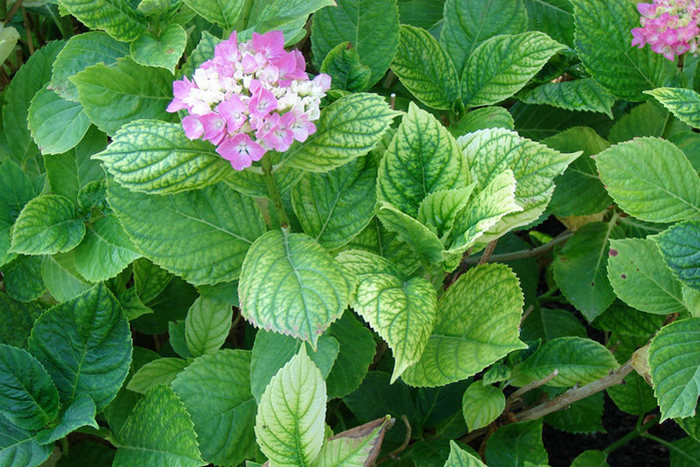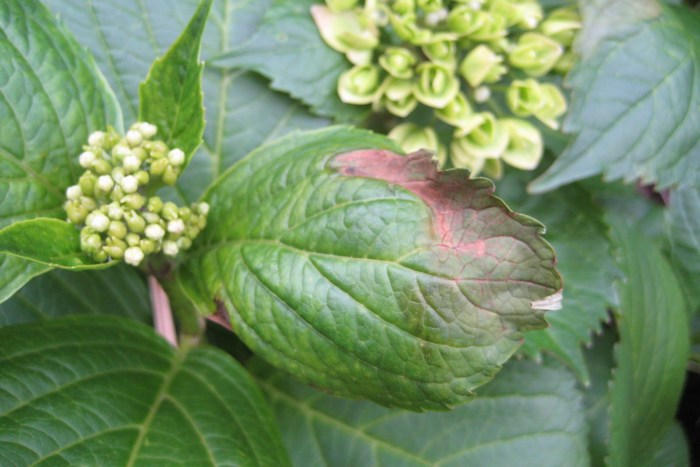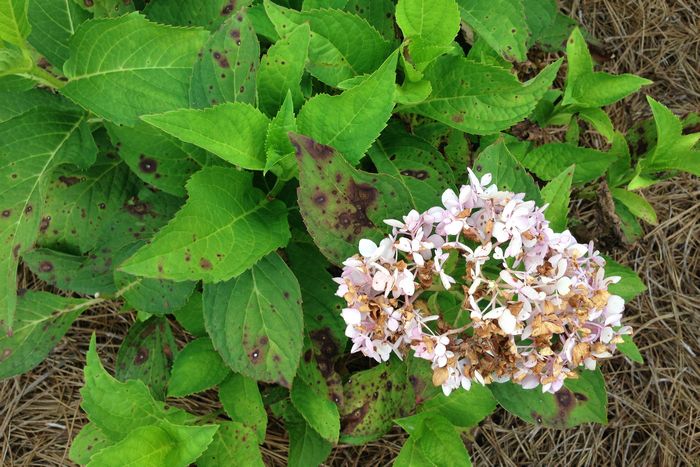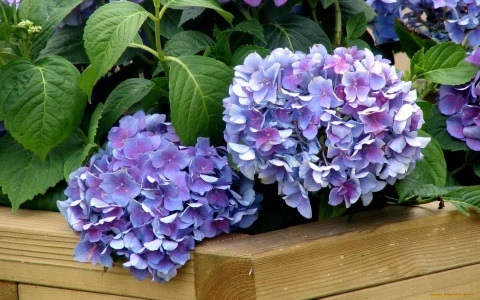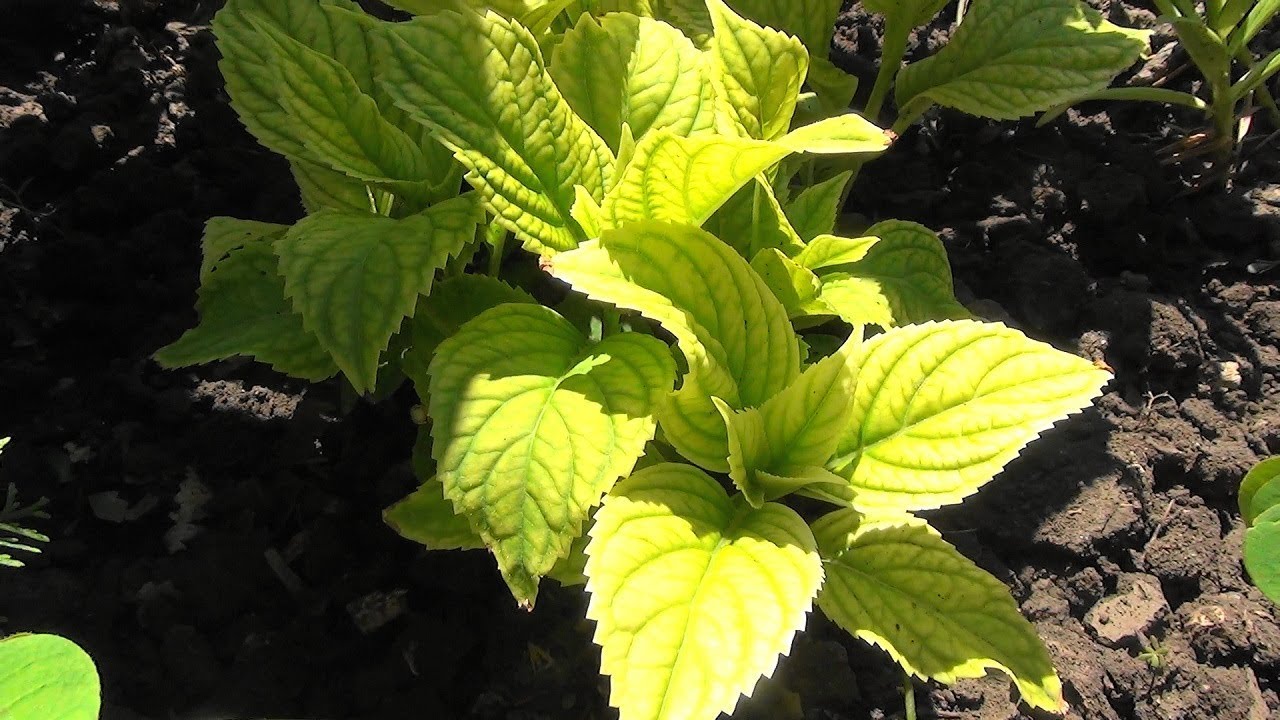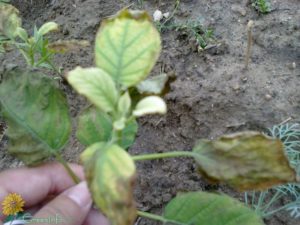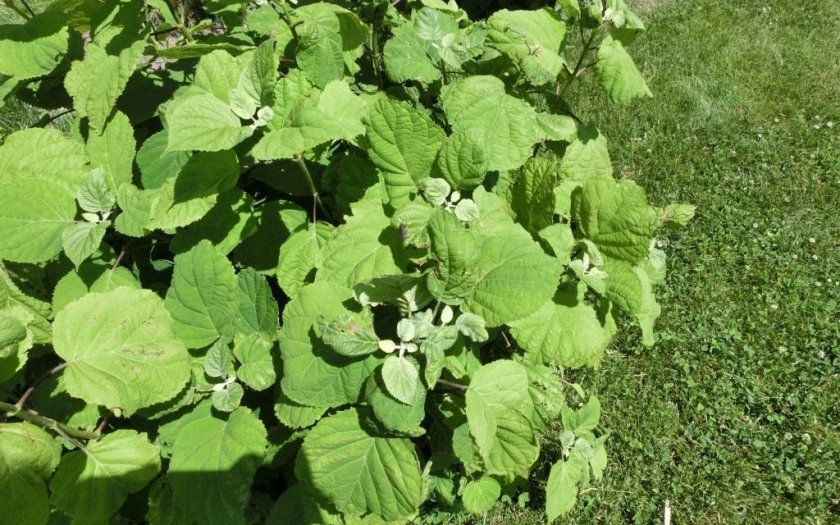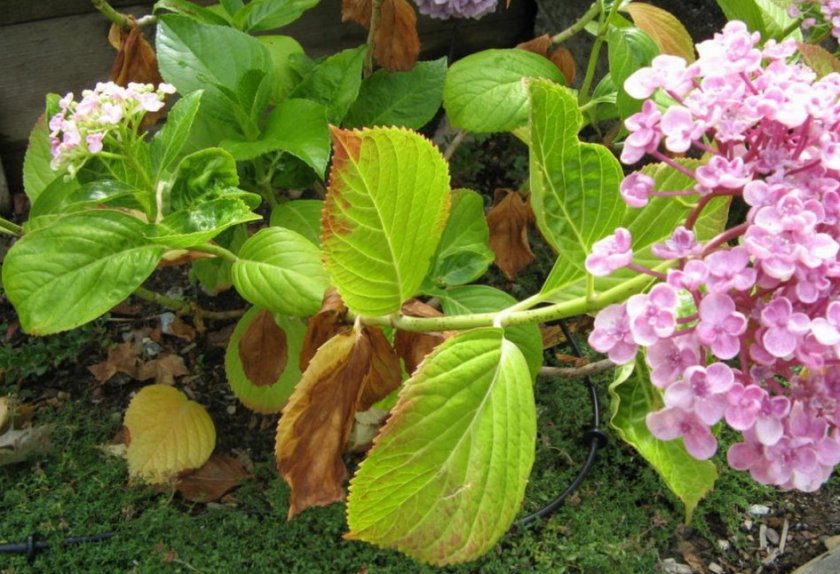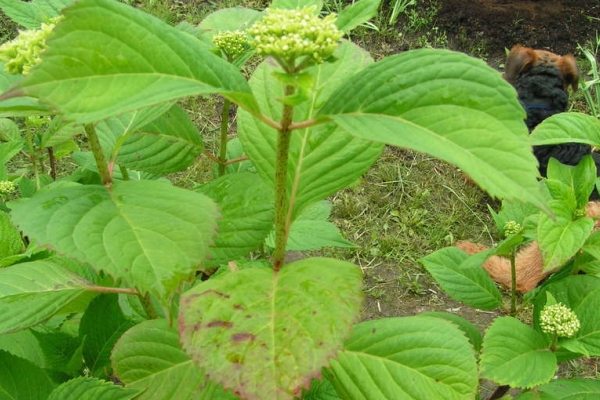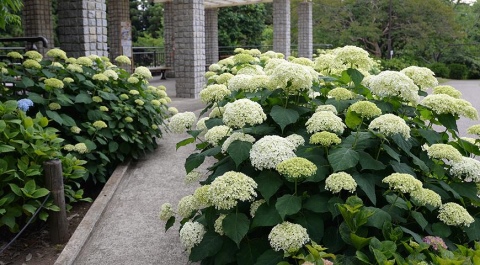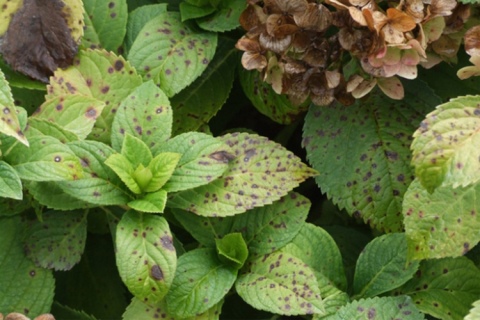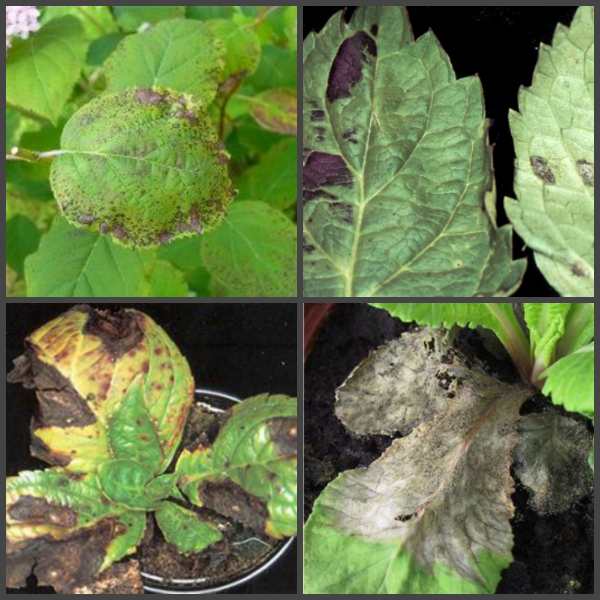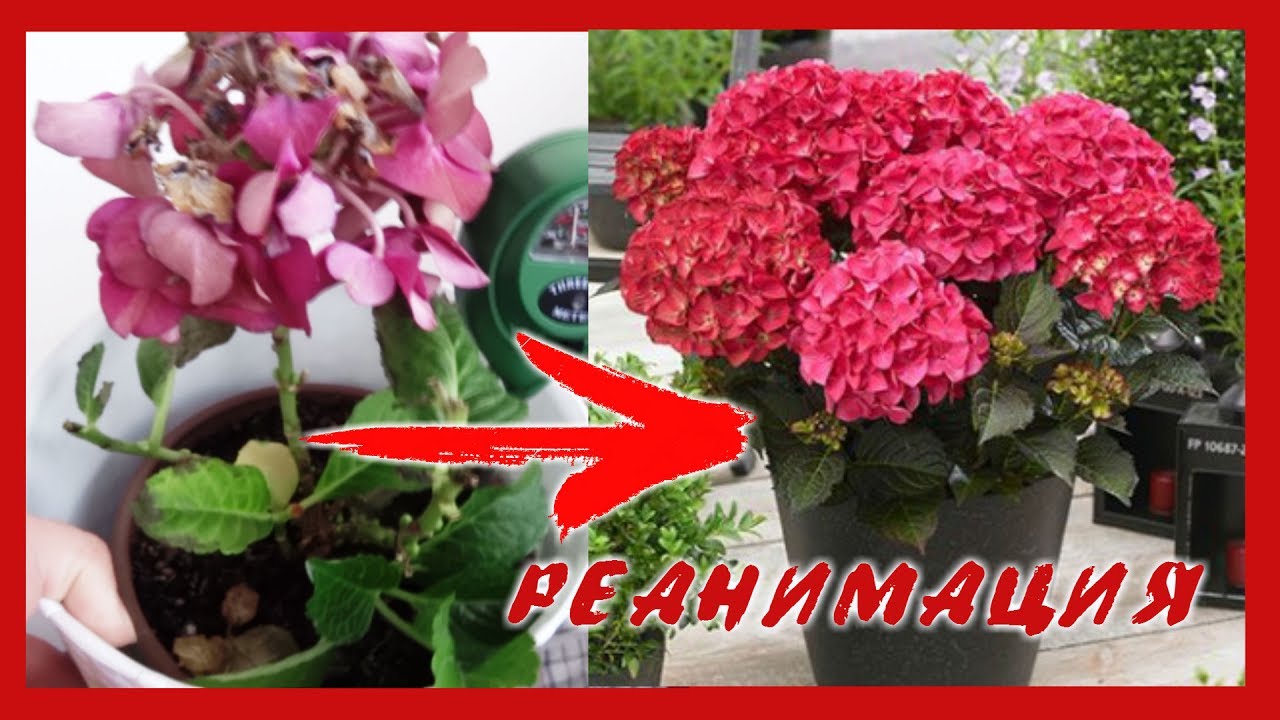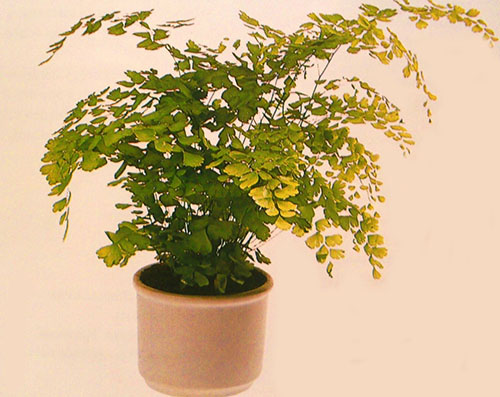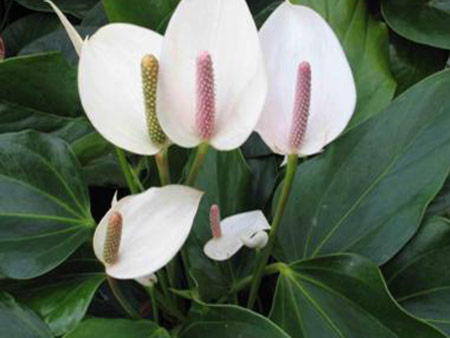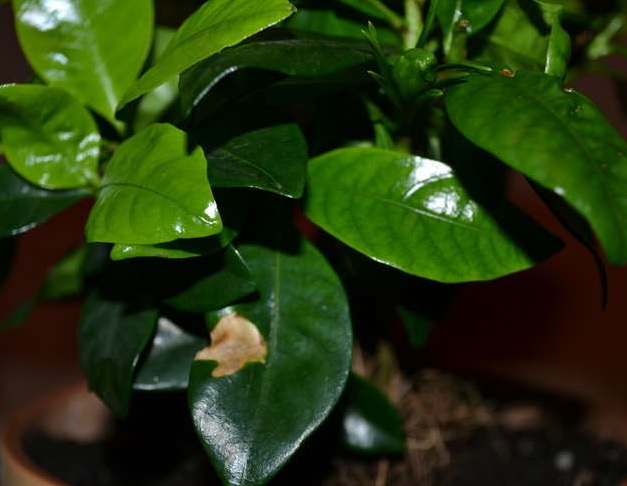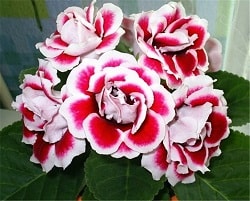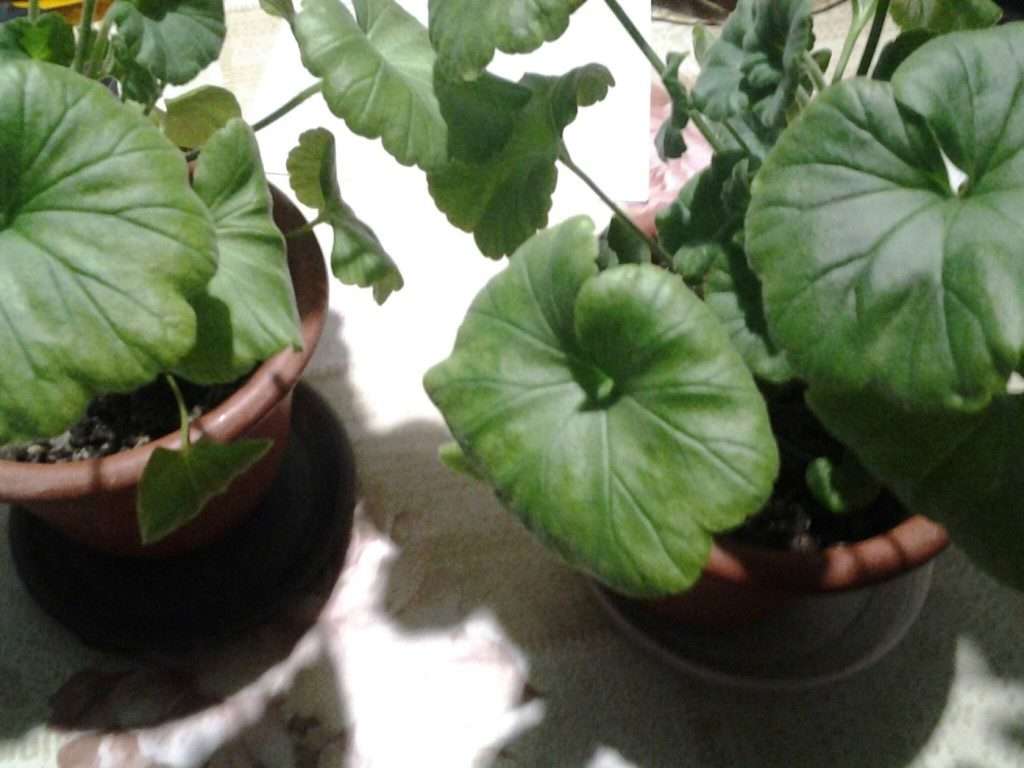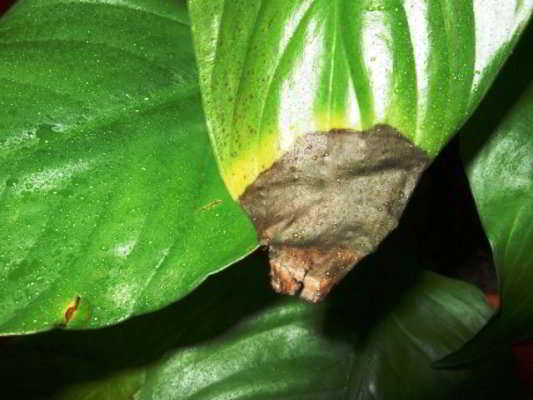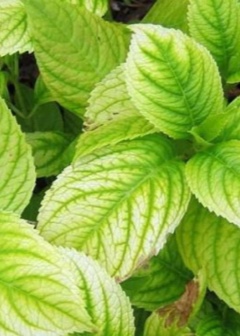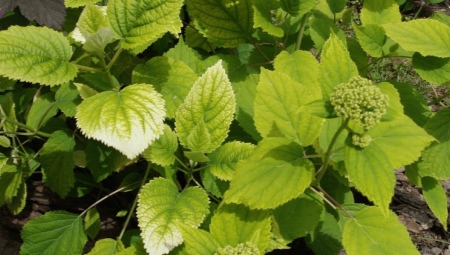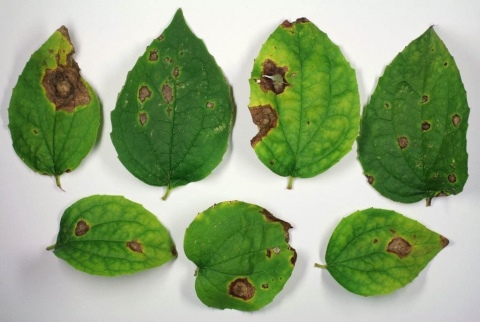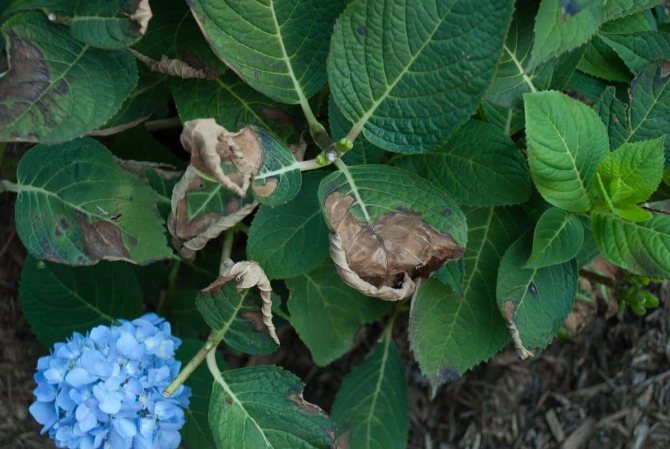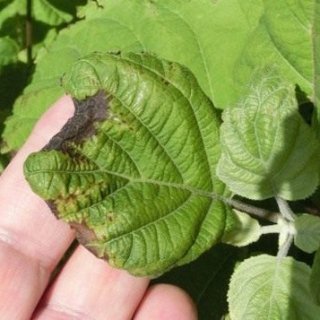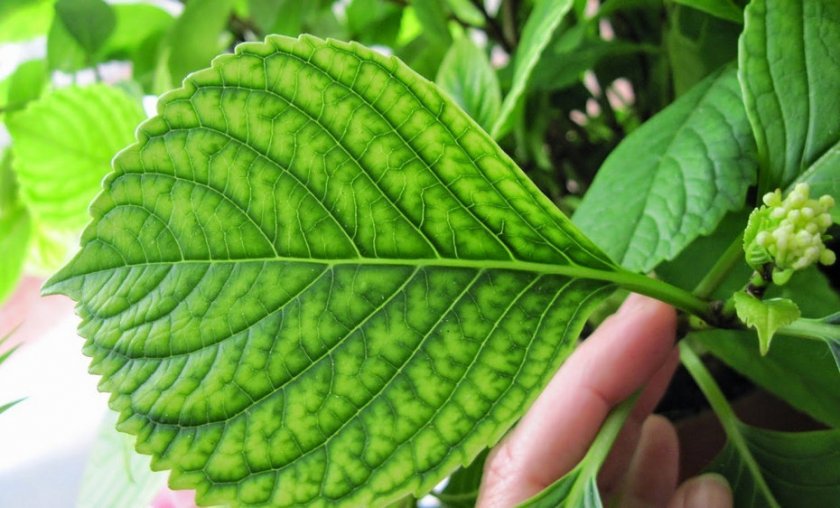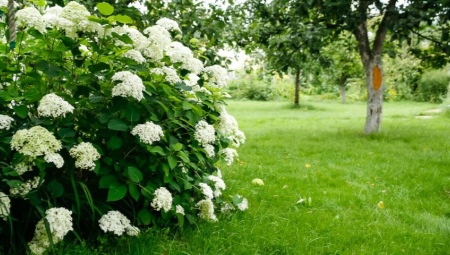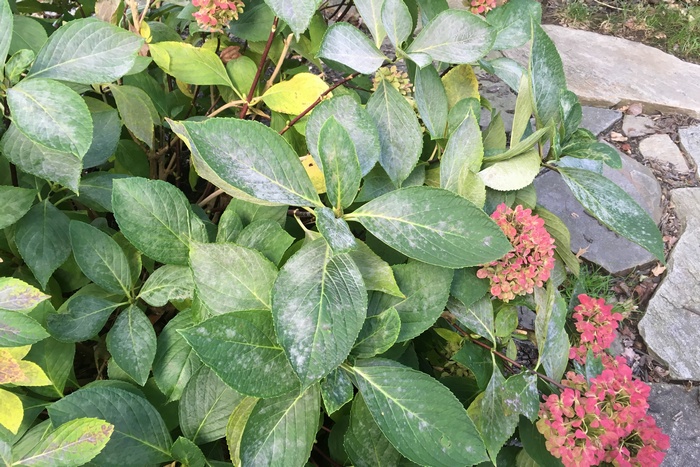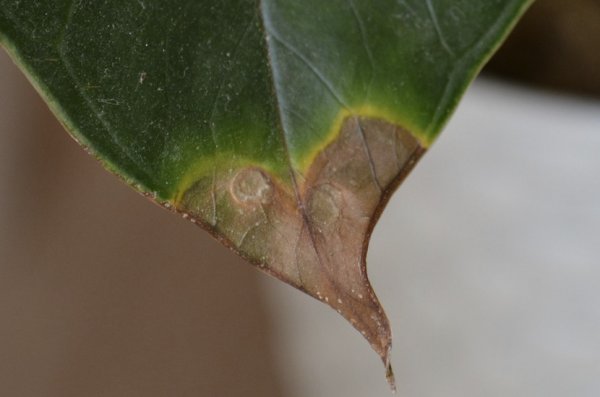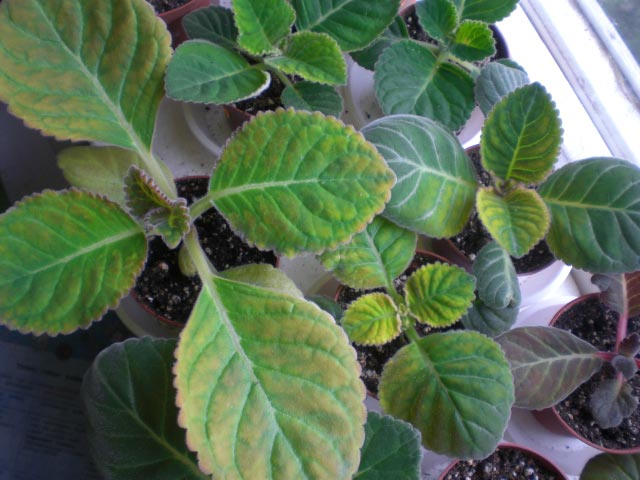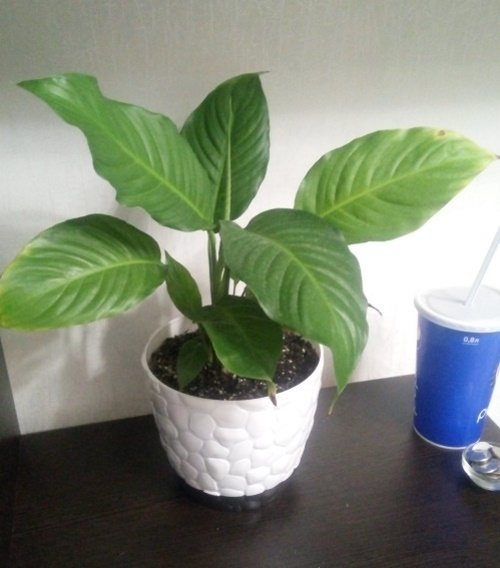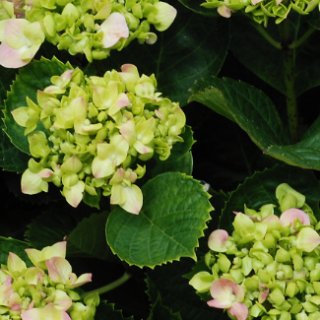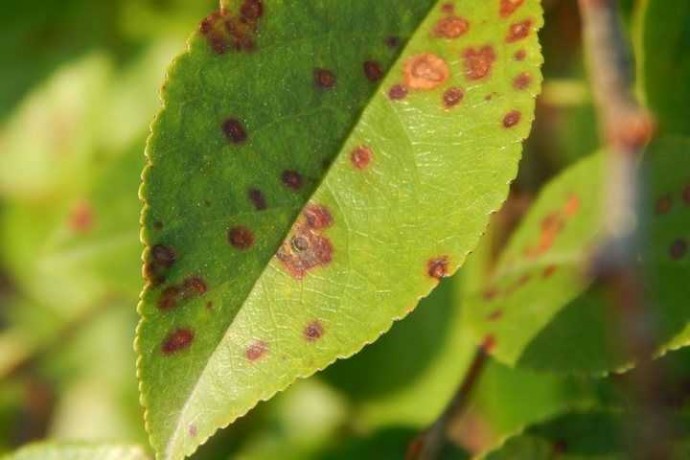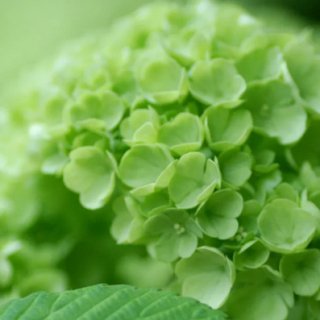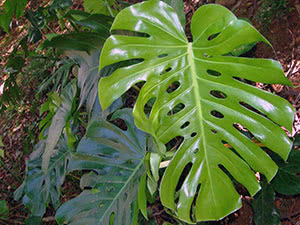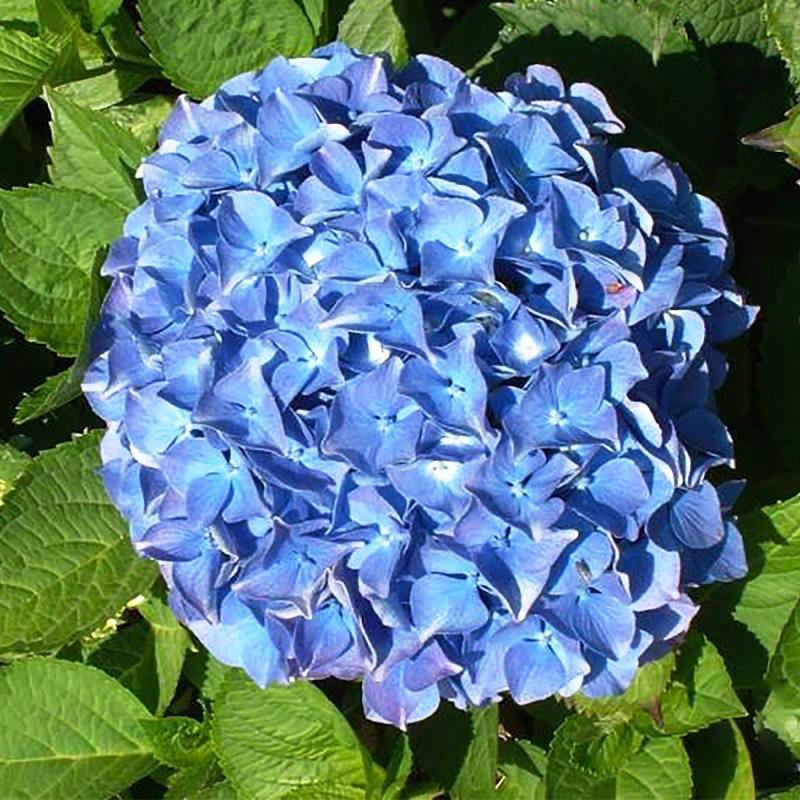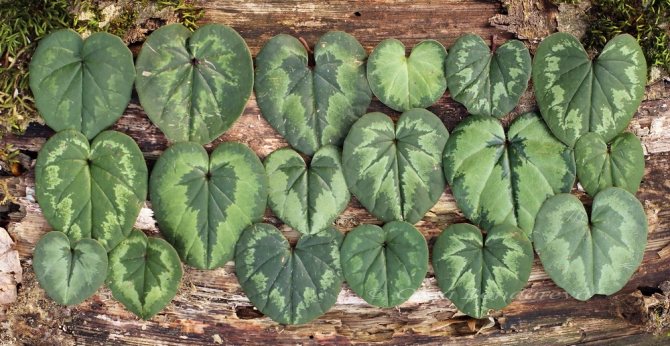Pests
Often the culture is affected by pests. Before you start fighting them, you need to find out who can eat dahlias, and what tools are best to use.
Aphid
If aphids appear on dahlias, the pest is located on their young shoots and leaves. The insect forms entire colonies, so it is impossible not to notice them. As a result of the defeat of aphids, the growth of the plant slows down, the buds are deformed, and the bush can completely stop blooming.
Aphids on dahlias, how to process the bushes? You can fight this harmful insect with the help of drugs: Inta-vir, Actellik or Decis.

Aphids will not allow the plant to fully develop if it is not destroyed
Nematodes
These worms damage the shoots, leaves and buds of the plant. A characteristic sign of damage is light spots, which subsequently darken and die off. As a result of the activity of nematodes, the bush noticeably lags behind in growth, shoots and leaves are deformed.
Affected dahlias must be dug up and burned. In the same place, the flower cannot be re-planted. To combat the pest, you need to use marigolds, placing them somewhere nearby. The smell of this plant scares off nematodes.
Plant bugs
Insects feed on the young leaves of the plant. As a result, metabolic processes in tissues are disrupted. Initially, brown spots appear on the leaves, and then the plates wrinkle completely.
With a small number of pests, you can get rid of them in a folk way using a solution based on Coniferous soap. If the lesion is massive, it is necessary to use the drugs Mospilan or Iskra-M.
Important! It is necessary to process the bushes in the morning, since during this period the bugs are inactive
Gastropods or slugs
These creatures are activated at night. They are attracted by the young leaves of the plant. Pests gnaw holes in them, and sometimes eat them completely. This negatively affects the decorative effect of the bush.
For the destruction of slugs, it is necessary to use preparations based on metaldehyde. In dry weather, you can pour wood ash, red pepper or superphosphate at the base of the bushes. Beer traps are made to kill slugs, as they love the smell of this drink.
Greenhouse whitefly
A small white butterfly that lays eggs on the back of the plant's leaves. Gluttonous larvae emerge from them. To destroy the whitefly, it is necessary to water the plants with Aktara's working solution and at the same time spray the foliage with Mospilan or Aktellik.
Fawn or shaggy bronze
During the flowering period, large black insects appear on dahlias. Their size is about 1 cm. They feed on petals, stamens and pistils of a flower. Spraying with insecticides does not give the desired results, since new ones arrive to replace the dead pests. The only way to save dahlias is by hand-picking beetles.
Other
Sometimes dahlias can suffer from the gamma scoop moth. This pest becomes more active in late spring - early summer. The insect feeds on the nectar of flowers without causing serious damage to the plant.
The danger is posed by its larvae, which damage the dahlia tubers. As a result of their vital activity, the plant begins to wilt. For the destruction of caterpillars, it is recommended to use the drug Fufanon.
Do I need to prune hydrangea for the winter
Many gardeners cut shrubs in the spring, but this is quite dangerous for the plant and can destroy it. If sap flow has begun in the bush, then pruning will be too painful, its absence can lead to the formation of small inflorescences.
Important! When pruning large-leaved hydrangeas, the greatest care and attention should be taken. Do not prune branches too late in the fall, as they can freeze and die. In the spring, after opening the bush, you should carefully examine it and remove all dead parts before the start of sap flow
Frost-resistant species will feel better, paniculate at this time can still freeze a lot
In the spring, after opening the bush, you should carefully examine it and remove all dead parts before the start of sap flow. Frost-resistant species will feel better, paniculate at this time can still freeze very much
Do not prune branches too late in the fall, as they can freeze and die. In the spring, after opening the bush, you should carefully examine it and remove all dead parts before the start of sap flow. Frost-resistant species will feel better, paniculata at this time can still freeze too much.
Spray hosts with fungicides when the first symptoms of disease appear
Viruses X, HVX
Description and treatment:
a viral disease transmitted through untreated garden tools;
main signs: heterogeneous color on the leaves, absence of ovaries, the appearance of brown spots (rust on the leaves), growth arrest;
diseased plants cannot be saved, so the hosts are uprooted and burned;
to prevent it is important to disinfect the soil before planting, the garden tool used for pruning
Phylostictosis (brown spot)
Description and treatment:
the disease is caused by the fungus Phyllosticta, develops in high humidity and high temperatures;
the main symptom is brown spots with black dots on the leaves, as a result, the affected parts dry, die off;
at the first stage of infection, it is necessary to cut off the leaves affected by spores, burn them, in case of severe infection, uproot the hosts;
treat plants with fungicides, for example, "Strobi", copper sulfate;
for prophylaxis, spray with a solution of colloidal sulfur
Gray rot
Description and treatment:
a fungal disease that can lead to the death of hosts;
at the initial stage, plaque forms on the leaf plates of diseased plants, they rot, the tops dry out;
at an advanced stage, rot begins to spread along the stems - they dry out, begin to dry out;
in the latter case, the plants must be uprooted and burned;
at an early stage of infection, cut off the affected parts of the hosts, treat the rest with Fundazol or Ridomil Gold;
for prophylactic purposes, treat the soil, water with contact copper-containing preparations after the appearance of the first leaves
Root collar rot
Description and treatment:
fungal disease, which manifests itself when planting in a darkened place, high humidity;
the leaves turn yellow, discolor, dry, a gray bloom appears on the root collar;
if symptoms are found, you need to remove the host, rinse the roots, cut off those affected by rot and treat with fungicides, transplant to a new place;
to prevent the development of the disease, carry out root treatment with Privekir, process with Topaz, Mikosan
Causes of yellowing of leaves in garden and indoor hydrangea
If the green edge of the hydrangea leaf turns yellow, the reason is most likely due to non-compliance with the rules of care:
- wind and drafts;
- non-compliance with lighting standards;
- reduced acidity of the substrate;
- stagnant water;
- untimely feeding;
- disease.
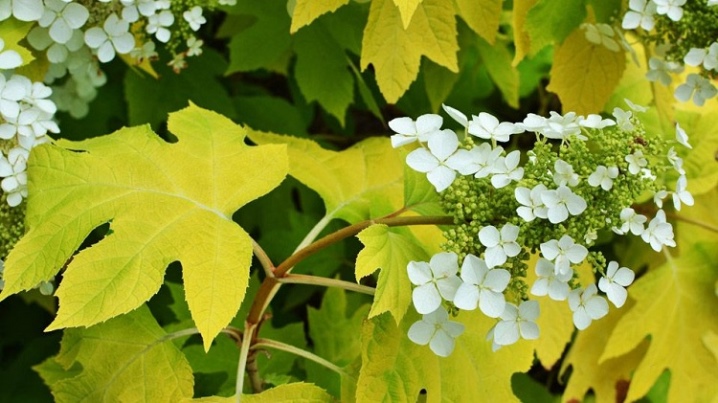
Yellow foliage
Lack of light or excessive lighting
Hydrangea belongs to the light-loving species, but does not tolerate direct sunlight. Incorrect placement of the flower can lead not only to yellowing of the foliage, but also to the complete drying of the plant. When choosing a permanent location, it is necessary to carry out preliminary shading, for example, using blinds.
Insufficient lighting is also discouraged for hydrangeas.Placing a flower in the shade will result in a complete lack of flowers and the leaf plates may lighten.
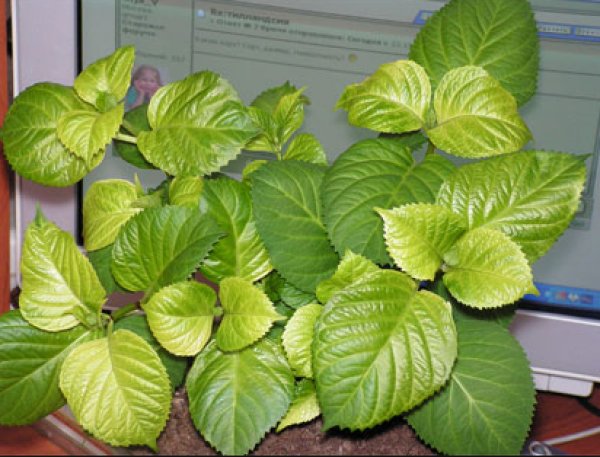
Irregular lighting
Attention! In the period from 12 to 15 hours, ultraviolet radiation is the most dangerous
Stagnant moisture
Another reason why hydrangeas have yellow leaves is due to improper watering. The flower is demanding about the systematic holding of this event.
Watering frequency is directly dependent on external factors. If the top layer of the soil is dry, then moistening should be carried out. Stagnant water in a pot or sump can lead to root rot and, as a result, yellow foliage and fall off. You should reduce and in some cases stop watering the hydrangea.

Watering hydrangeas
Parched earth
It is not recommended to allow the soil substrate to dry out. At elevated temperatures, watering the flower should be carried out twice. To preserve moisture for a longer period, mulching can be carried out.
On a note! For mulch, you can use chopped coniferous bark, cones, wood shavings.
The garden hydrangea should be planted away from trees. Close proximity can harm the flower, since it simply does not have enough moisture for life, growth, and it will begin to dry.
Low temperatures and drafts
At home, the optimum temperature for growing is +22 degrees. If you increase this threshold, then the leaf plates will begin to fade and acquire a yellow tint.
Sharp changes in the external environment are contraindicated for this type: drafts in hydrangeas reduce immunity and lead to diseases. Paniculate, large-leaved and tree-like varieties at the time of airing are recommended to be removed to a place where they are not felt.
Plants should be kept in cool rooms throughout the autumn and winter period. The optimum temperature is +8 degrees. After hibernation, the hydrangea can be returned to its previous place.
On a note! Outdoor species should be grown in a garden near a fence or near a wall. They must be protected from wind and draft.
Soil depletion
The soil should be enriched annually. In autumn, the plant lays flower stalks and requires a large amount of nutrients. If you do not carry out this procedure, then flowering the next year may simply not come.
The fertilizer solution should contain potassium sulfate and superphosphate components. Diluted in the following proportions: 40 ml in a bucket of water.
Low soil acidity
Another reason why uhydrangea leaves turn yellow - alkaline substrate. If the pH is not correct, the leaves will turn yellow.
Using citric acid water for irrigation will stabilize the required level. To do this, only a few drops of lemon should be diluted in water.
You can also increase the acidity with vinegar. The recipe is as follows: 10 ml of vinegar essence must be diluted in a bucket of water.
On a note! The essence can be successfully replaced with oxalic acid.
Disease prevention
You should choose the right site for planting a flower. The plant loves partial shade. It is necessary to plant the flower in light soil that has acidic properties. The crop does not like heavy alkaline or neutral soils. If you decide to plant a flower in an apartment, you can make the land yourself by mixing 4 parts of turf, 2 parts of leafy soil, 2 parts of peat and 1 part of coarse river sand.
Since gall nematodes die from high temperatures, in the spring, before planting the plants, you can spill the soil with hot water (t = + 50-55 ° C) so that it passes to a depth of 15-20 cm.Then you can cover the soil with polyethylene so that the water cooled more slowly. True, if the land is heavily affected by nematodes, then some of the parasites can go down and escape.
Also, parasites are scared off by plants - marigolds and calendula, so you can sow them near hydrangeas.
Plants should be properly fertilized with nitrogen in spring. To do this, add 1 tbsp. a spoonful of potassium sulfate or urea in a bucket of water. 5 liters of solution are poured under one plant.You can also feed with a solution of 1 part manure and 10 parts water. In summer, fertilize with phosphorus and potassium (nitrophos, Kemira floral, nitroammophos, Agricola). Pour 1 tbsp. spoon of nitrophoska or Agricola in a bucket of water (10 l). And in the fall they use only phosphorus (add 1 tbsp. A spoonful of superphosphate to a bucket of pure water). Kemiru flower is done like this: pour 10 g into a bucket of water (10 l).
In early spring, it is advised to spray the plant for the prevention of diseases and parasite attacks with a solution, pouring 100 g of copper sulfate into a bucket of water. Instead, you can treat the culture with Fitosporin, Topaz, Iskra.
If you grow hydrangea, fully observing agricultural techniques, properly watering, feeding, doing preventive spraying in early spring to prevent hydrangea diseases and pest attacks, then it will thank you with lush and large flowers.
- Coniferous yew: instructions for planting and care in the open field
- Muraya: home care, photo of the plant
- Muraya: first aid that is always there
- Large-leaved hydrangea
- Quince: planting, care, growing a bush
- Indoor stromant flowers: home care
- Kuril tea: pruning for the winter
- Scumpia: planting and care in the open field, photo of many-sided shrubs
What to do if leaves curl and dry out due to chlorosis
Sometimes, due to chlorosis, hydrangea leaves curl, what should I do in this case? The signs of chlorosis are yellowing of the leaves, but the veins remain a natural green hue. They curl and dry up, then completely die off and fall off.
When such a problem occurs, the hydrangea is carefully treated with preparations that contain iron. To do this, use Atichlorosis. From the folk method, treatment with a solution of ferrous sulfate works well. You can water not only the soil, but also spray the shrub itself.
Note! After the end of treatment, as a preventive measure, it is recommended to water the plant with a weak solution of citric acid.
Diseases of large-leaved hydrangea
Unlike tree and panicle hydrangea, large-leaved hydrangea is less resistant to temperate climates, more often sick, capricious to growing conditions. But diseases in all types of hydrangeas are common. It's just that some varieties and varieties pick up ailments faster.
Powdery mildew damage
The causative agent of the disease is a fungus. Powdery mildew "sits" both on the home hydrangea and on the garden.
Infection with downy mildew and powdery mildew occurs from infected soil. Warm and rainy weather accelerates the spread of the disease.

Yellow-brown spots with a white bloom appear on the leaf plates, which darken over time
With real dew, yellow-green specks appear on the foliage, which grow and then acquire a rusty color. On the inside of the leaves, there is an off-white cotton layer. Young shoots bend and die.
- For false dew, folk remedies are used, for example, a solution of laundry soap, which is sprayed on the plant.
- Fungicidal preparations will save you from powdery mildew.
Ring spot
This disease, caused by bacteria, first affects the leaves, which form circles that are brown around the edges. Further, the foliage turns yellow, curls, dies off.
Causes of ring spot infestation:
- diseased seedlings
- disease-carrying insects.
Attention! There is no cure for the disease - the plant will definitely die. The main thing is to recognize the disease in time, to establish why the leaves of the hydrangea dry at the edges, and to destroy the diseased flower until healthy plants in the neighborhood are infected.
The main thing is to recognize the disease in time, to establish why the leaves of the hydrangea dry at the edges, and to destroy the diseased flower before the healthy plants in the neighborhood become infected.
Ascochitous spot
With ascochitis, rusty or brown blots appear on the bushes.Preventive measures will help to protect the large-leaved hydrangea from disease.
Before the foliage blooms, the bushes are sprayed with a Bordeaux mixture (1%) - 1 package is diluted in a bucket of water (10 l).
Note! During treatment, the leaves of the plant are sprayed thoroughly, not only from the outside, but also from the underside. Most often, hydrangeas get sick from gardeners who do not take enough care of their plantings.
Hydrangea is a chic plant with lush, bright flower caps. With proper care, the bushes will stand until October with bright greenery and huge flowers that are impossible to stop looking at. And if you know all the diseases of hydrangea, then their treatment and elimination of the consequences will not be a problem.
Most often, hydrangeas get sick from gardeners who do not take enough care of their plantings. Hydrangea is a chic plant with lush, bright flower caps. With proper care, the bushes will stand until October with bright greenery and huge flowers that are impossible to stop looking at. And if you know all the diseases of hydrangea, then their treatment and elimination of the consequences will not be a problem.
Drying branches
Treelike hydrangea shoots can also undergo drying out and other painful changes. The most common cause is various types of rot.
White rot
This fungal infection causes the plant to slowly die. It begins with infection of the root system due to waterlogging of the soil and the subsequent nutritional deficiency of the hydrangea.
You can identify the disease by a whitish bloom in the form of flakes, while the branches may turn black. Proven fungicidal preparations (Fitosporin, Copper oxychloride), used in accordance with the instructions, help to cure the bush.
Gray rot
Parts of the bush that have exposed this disease soften, become watery, and become covered with a gray bloom. Subsequently, such areas die off and through holes are formed in their place.
The affected parts of the hydrangea are cleaned by hand and then treated with suitable fungicides. For garden specimens, it is recommended to use Rovral Flo 255 SC once every 3 weeks. Pure flowers or Fundazol are more suitable for indoor flowers.
What to do if hydrangea leaves turn yellow: plant treatment
Flowers on the windowsill are always pleasing to the eye and cheer us up, especially if they bloom very beautifully. Hydrangea, as a houseplant, has long settled in our homes. But there are situations when a flower ceases to please us and yellow leaves appear on it. This article will help you figure out why the leaf turned yellow.
-
- 1 Causes of yellowing
- 2 "Treatment of indoor plants"
- 3 How to cure diseased leaves
- 4 Prevention of disease
- 5 "Why do leaves on plants turn yellow?"
If you saw that the hydrangea began to turn yellow, then the first thing that comes to mind is that somewhere an error in care has crept in or the plant is missing something. Therefore, first of all, you need to evaluate the correctness of care, and only then look for other reasons why a yellow leaf appeared on the plant.
Hydrangea leaves turn yellow due to the following mistakes made when caring for it:
- you filled the flower. Home hydrangea is a very moisture-loving plant. But even it can be poured if watering is done too often. The first to react to waterlogging are the leaves, which will turn yellow and fall off;
- lack of warmth. This indoor flower does not like drafts and low temperatures. When a plant gets into such an environment, the first signal about inappropriate conditions of detention will be a yellow leaf that appears;
- lack of nutrients. Even for indoor hydrangea, which grows in a pot, it is necessary to ensure that it receives an optimal set of micro and macro elements;
- lack of sunlight. For normal growth and development of a flower, a certain light regime must be observed. It is important both for the health of the hydrangea and for a beautiful bloom.But remember that the light should be diffused, not direct. Otherwise, those that received a sunburn will be added to the yellow leaves. It is manifested by the fact that the leaves turn brown and dry;
- feeding during flowering and stem formation. If this is not done, the first yellow leaf will appear on the stem after a while.
It is worth dwelling on the lack of nutrients in more detail. During the flowering period, the plant requires the maximum amount of nutrients. And even a small lack of them can lead to inadequate formation of inflorescences, and also cause the leaves to turn yellow. This usually indicates that the soil is lacking in iron and nitrogen.
If the care of the flower turned out to be correct, and the leaf is still yellow, you need to look for the reason elsewhere. Sometimes hydrangea leaves turn yellow and dry due to illness.
Despite the sufficient resistance of hydrangea to various types of infections, in certain situations it can be attacked by viruses and fungi. Why such situations occur can be answered quite easily.
The whole reason here again lies in the improper care of the flower.
For indoor hydrangea, not so many diseases are characteristic, and only some of them can cause yellow leaves. For example, the most common cause of leaves turning yellow is a viral disease such as ring spot. In this case, the leaf not only turns yellow, but also deforms. It is by the deformation of the foliage of the plate that one can determine that the cause is in the virus.
Indoor hydrangea is also characterized by such an ailment as chlorosis. The cause of its occurrence is a violation of the technique of watering the plant.
A flower can catch chlorosis after it was poured with tap water, which contained a large percentage of lime.
As a result of the accumulation of lime in the soil, it leads to alkalization of the soil. The infected leaf will turn yellow and dry out. They dry out due to the fact that the plant does not have the ability to fully feed.
Therefore, you need to be very careful about this indoor flower and caring for it.
What to do if the hydrangea turns white
Having studied the possible causes of what happened, you should be as responsible and competent as possible in the treatment of hydrangea. Most often, whitening occurs due to a lack or excess of nutrients.
How to feed the shrub
Feeding hydrangeas in spring should include organic fertilizers.
You can use a mullein, in a ratio of 1:10. Bird droppings are also great for this (1:15). You need to insist on them during the day.
Advice! Natural organics are more suitable for garden species. It is also used for tree-like representatives, it allows you to quickly build up green foliage.
In summer, it is recommended to use green infusions to form flowers; any weeds can be used. The use of herbal fertilizers will allow the leaves of paniculate subspecies to acquire a beautiful rich color.
Feeding with the addition of yeast will call to eliminate the cause of the appearance of light leaves in the hydrangea and nourish the plant with the necessary useful microelements. You can make it according to the following recipe:
- 1 bucket of water;
- a loaf of dark bread;
- 5 tablespoons of dry yeast;
- 1 tablespoon of granulated sugar.
The fermentation process should last at least 2 days.

